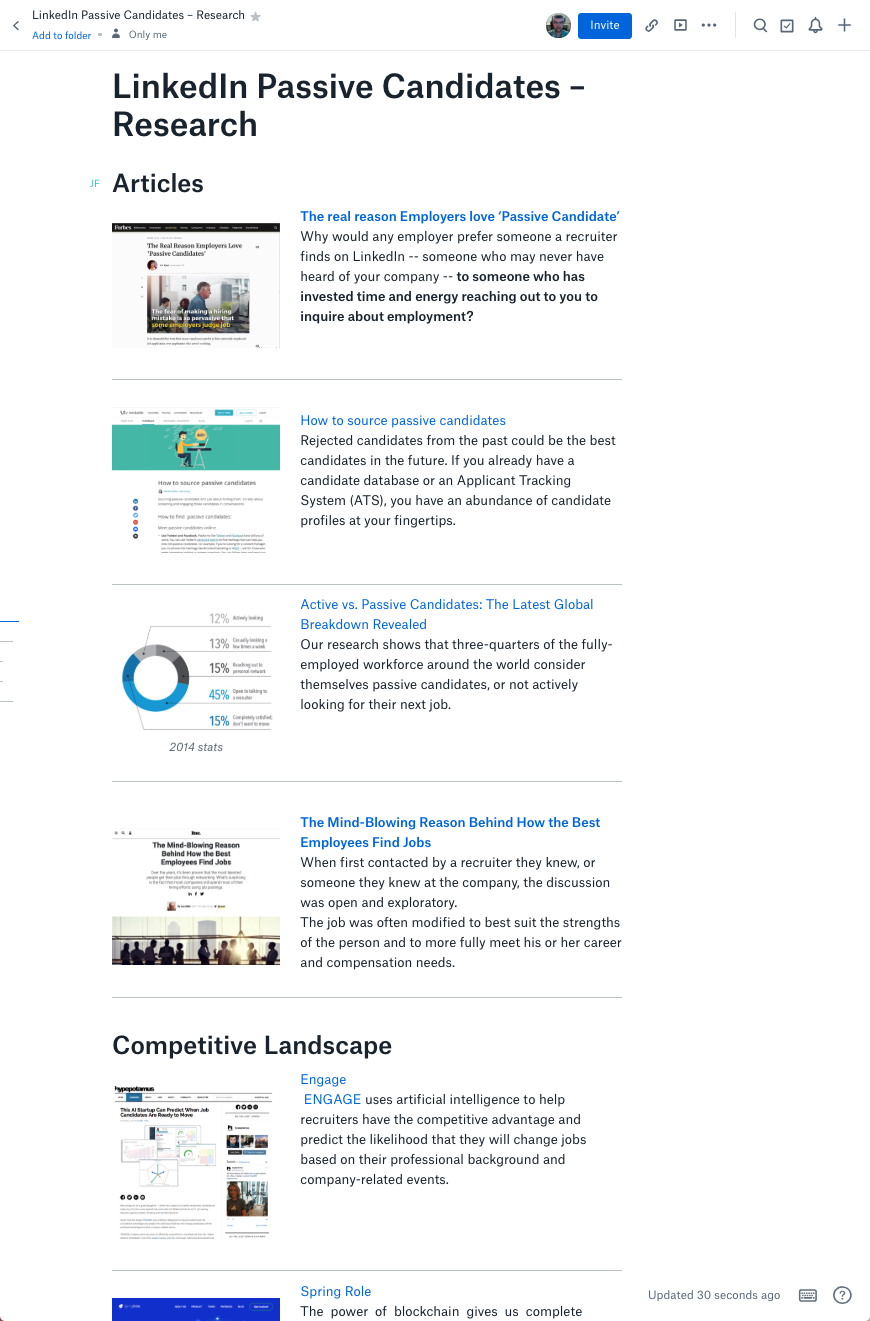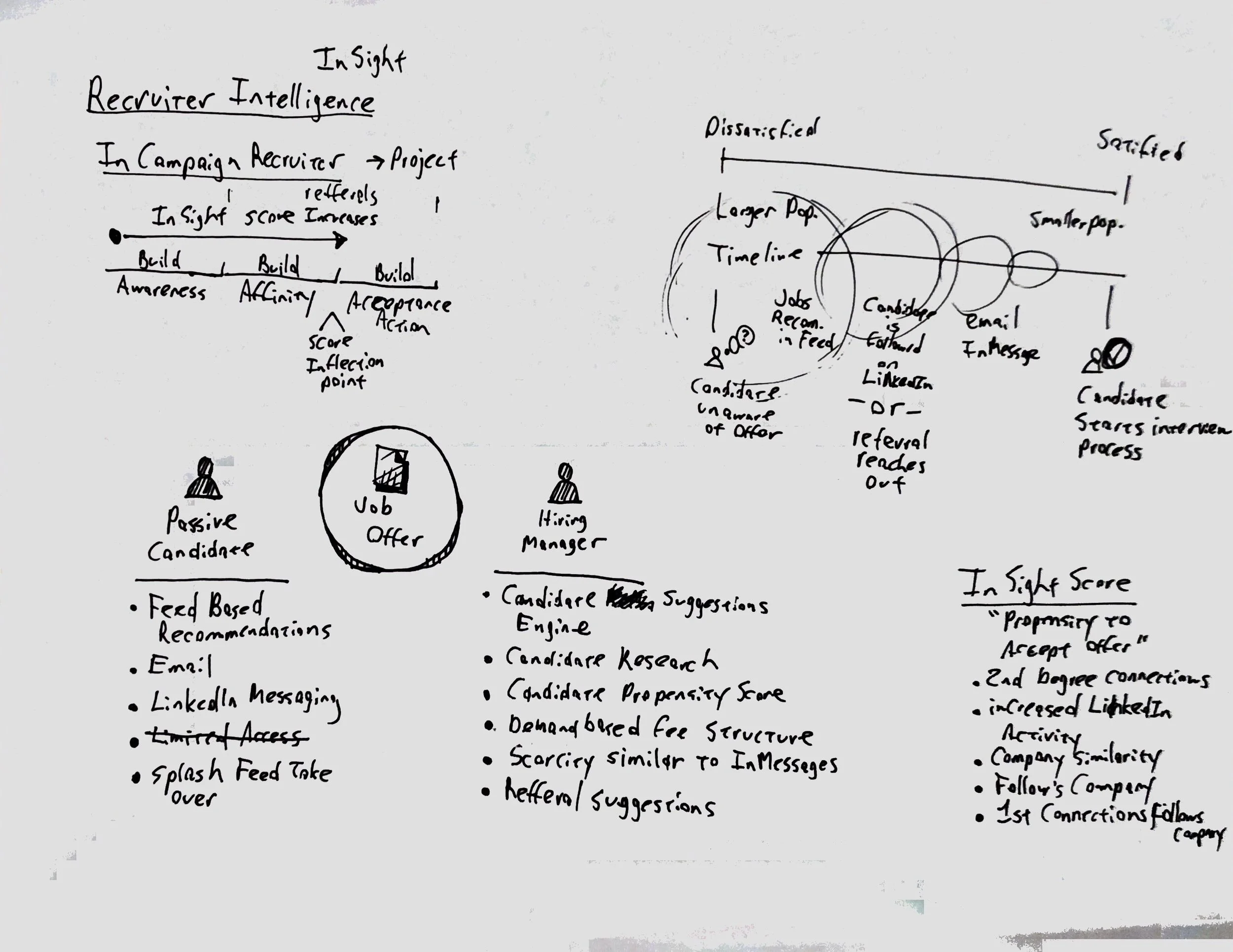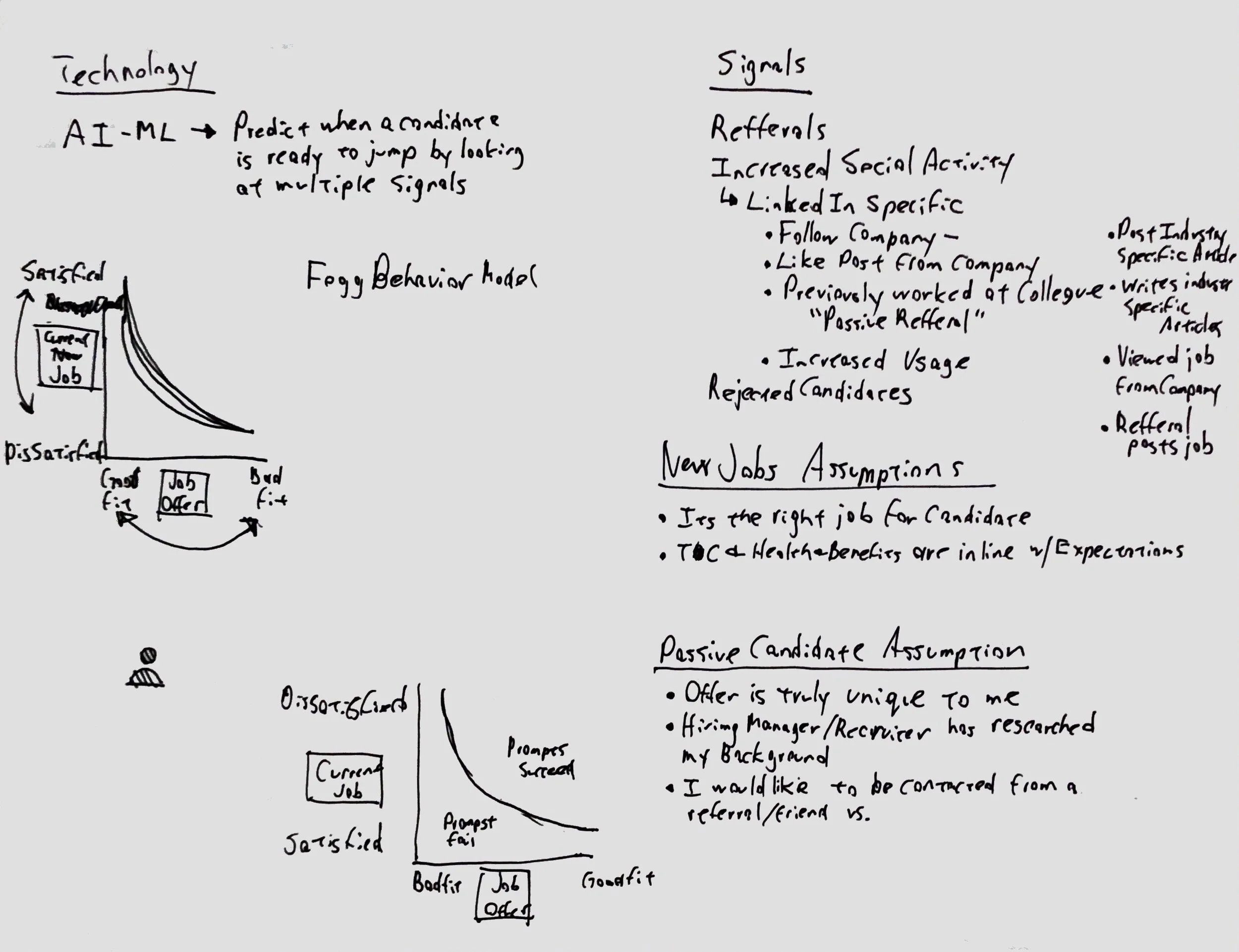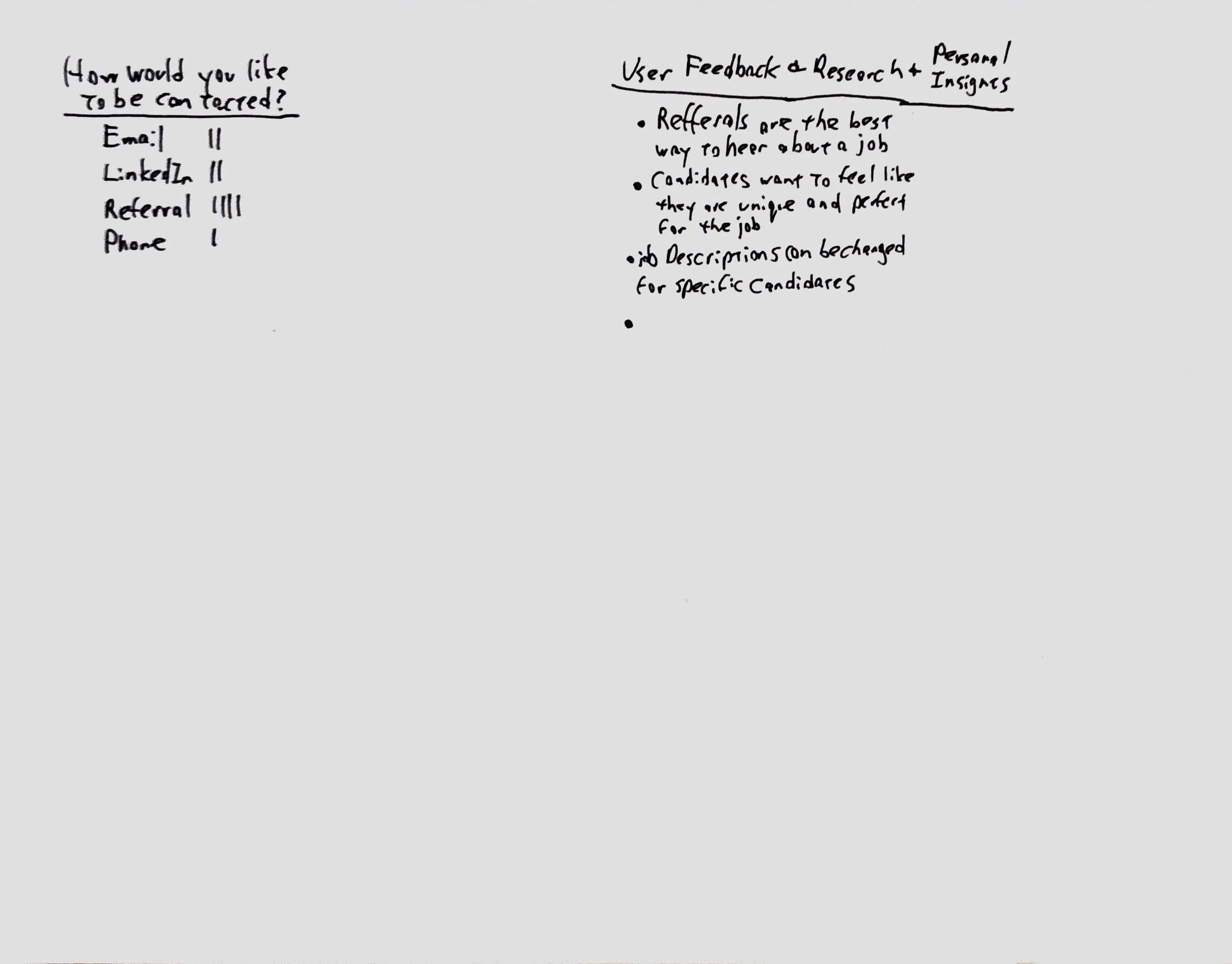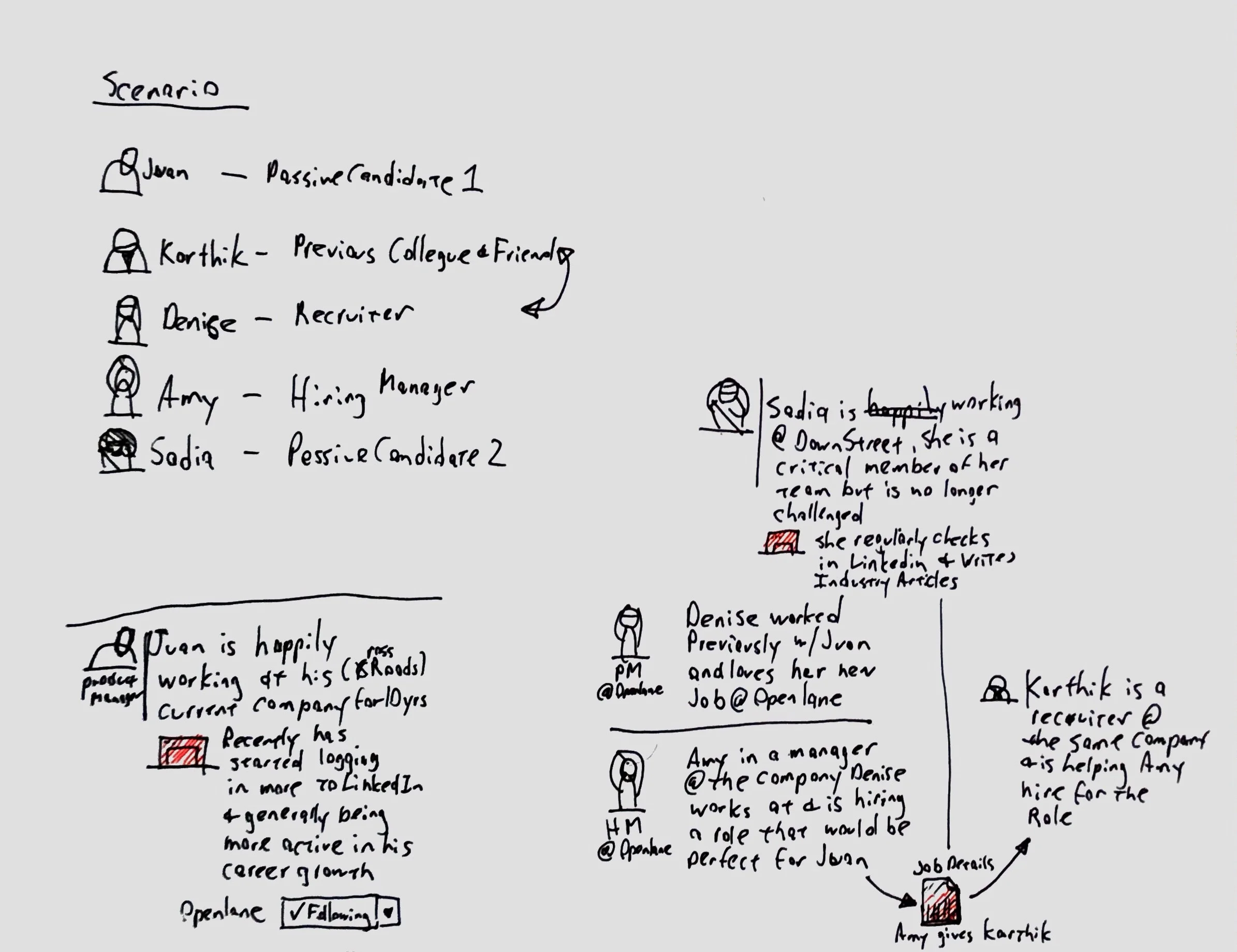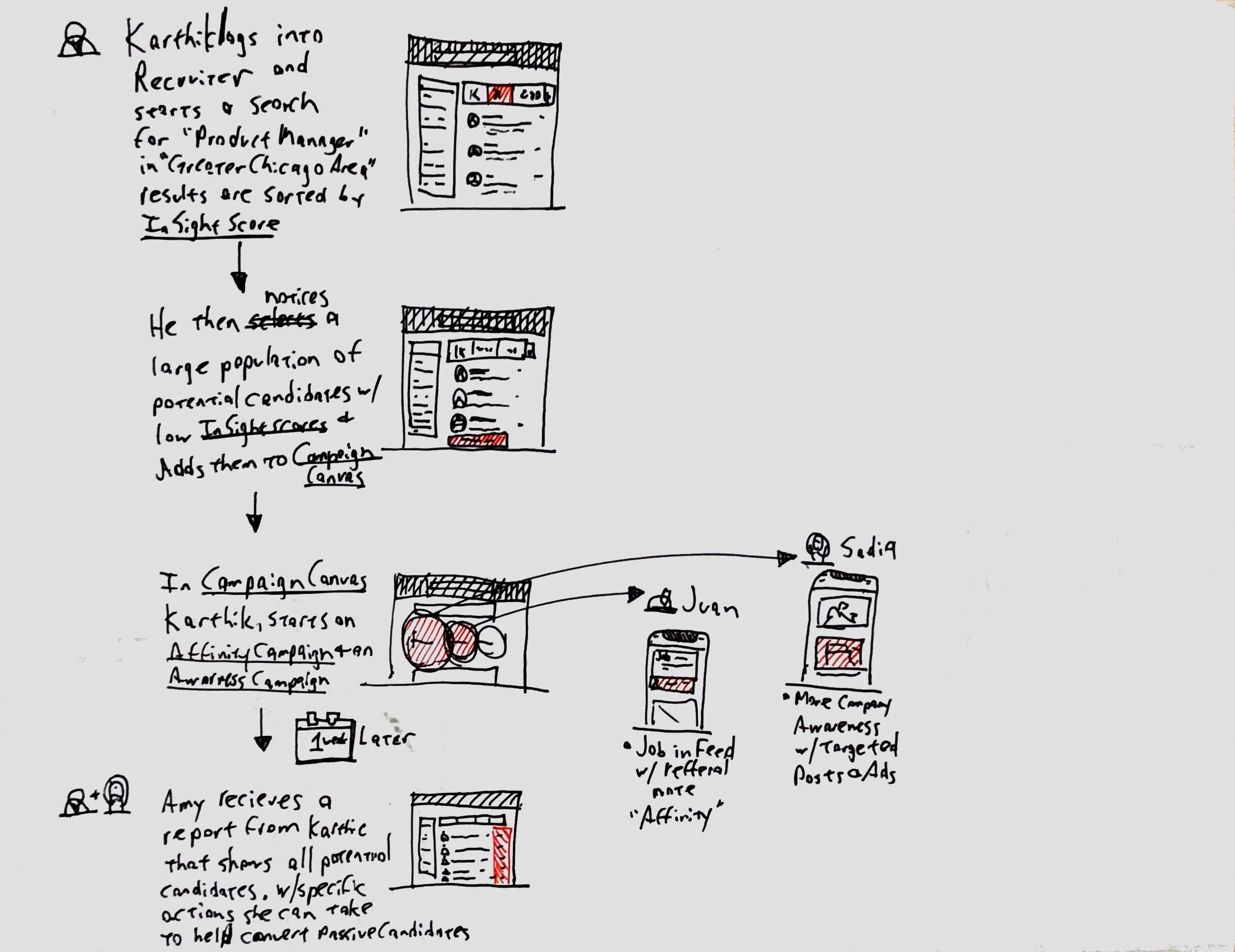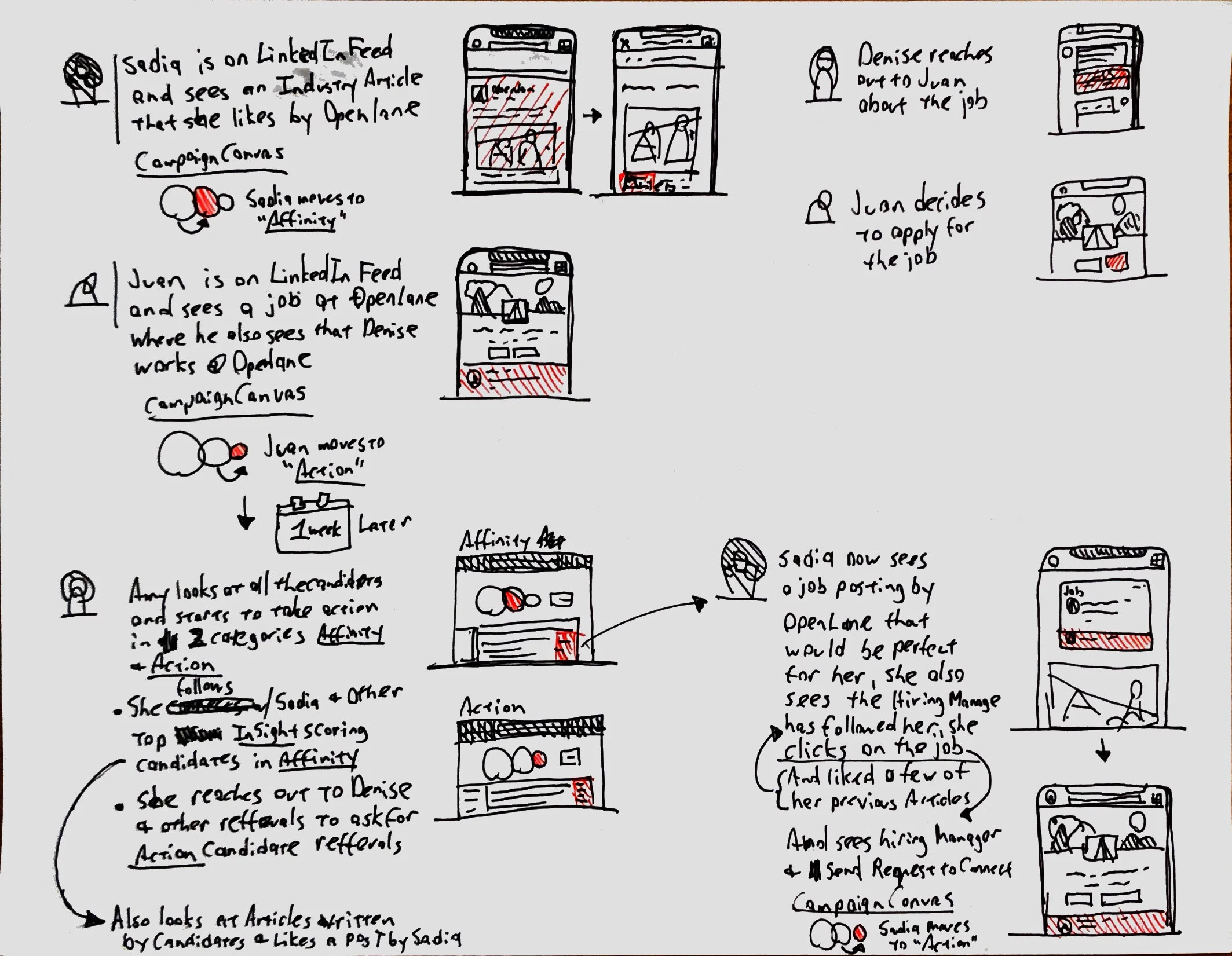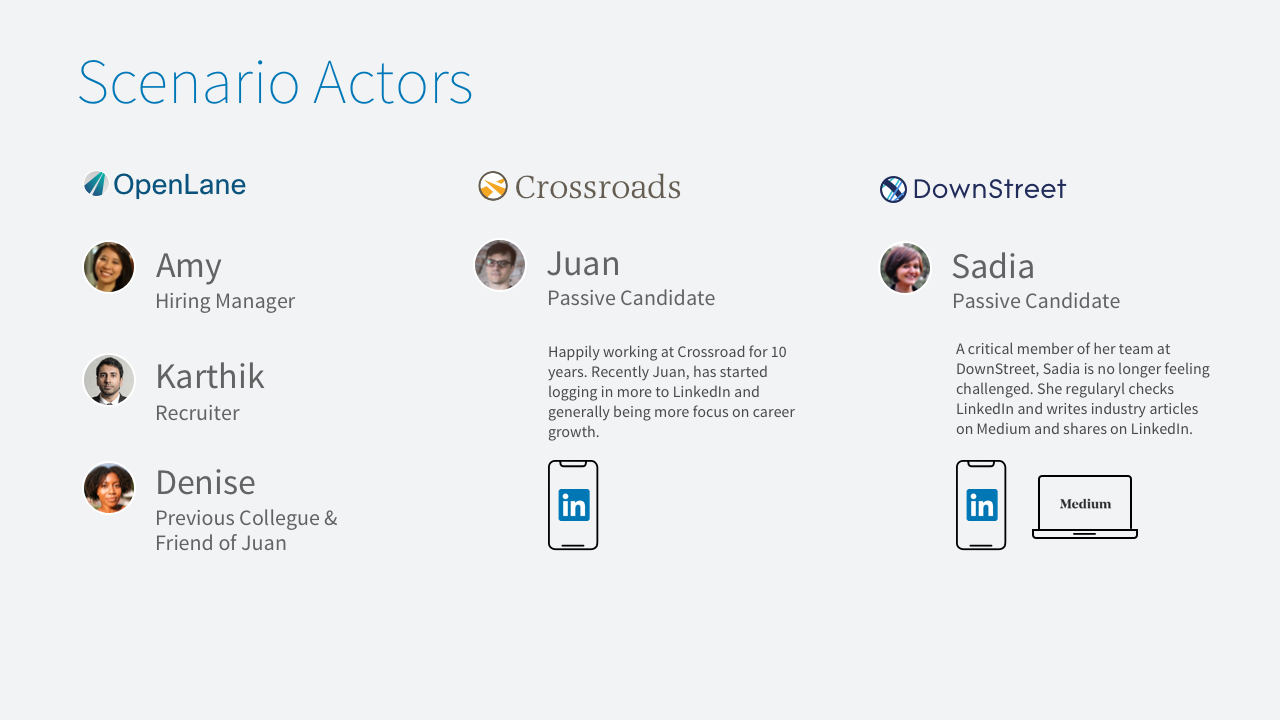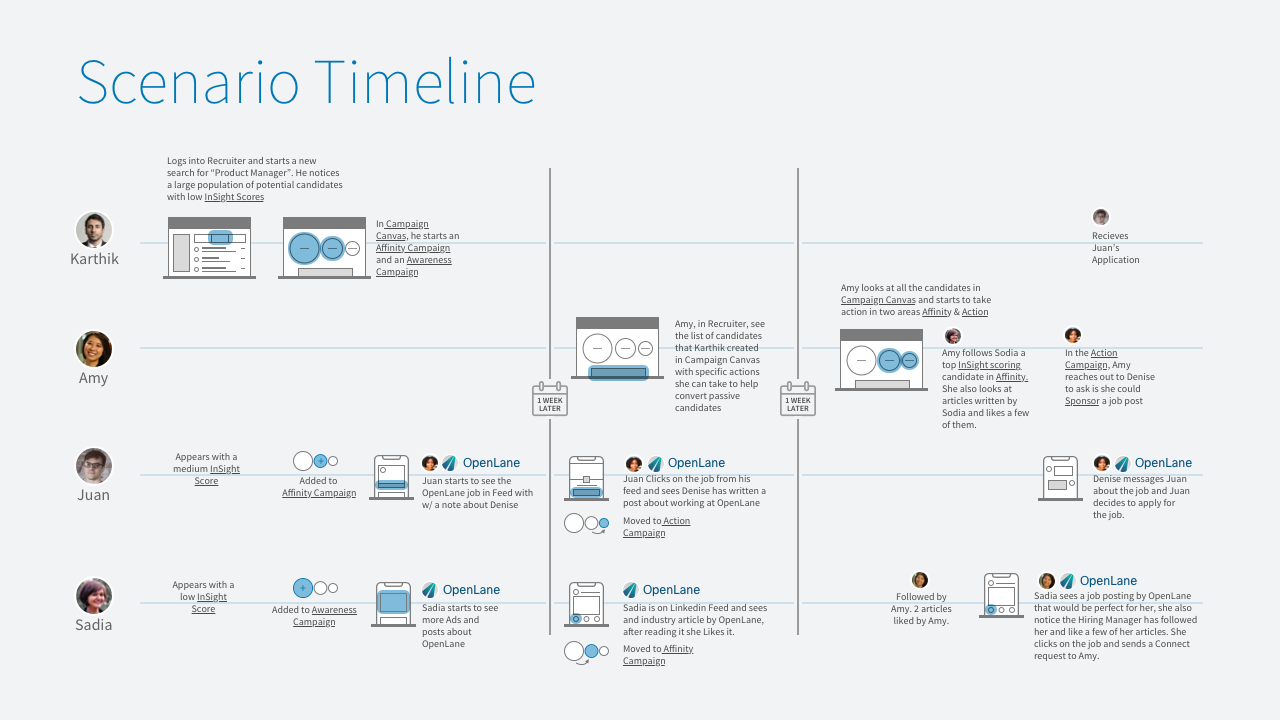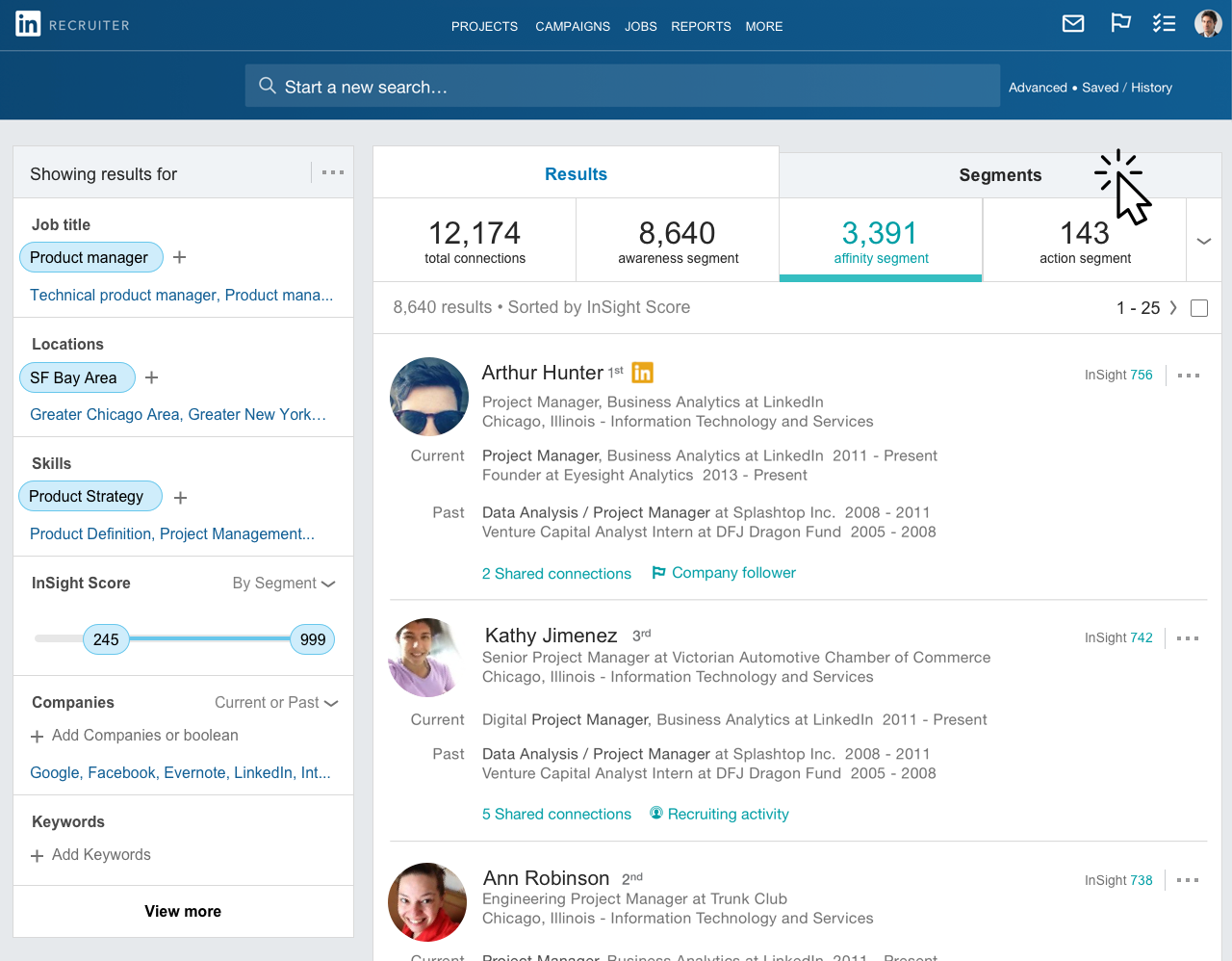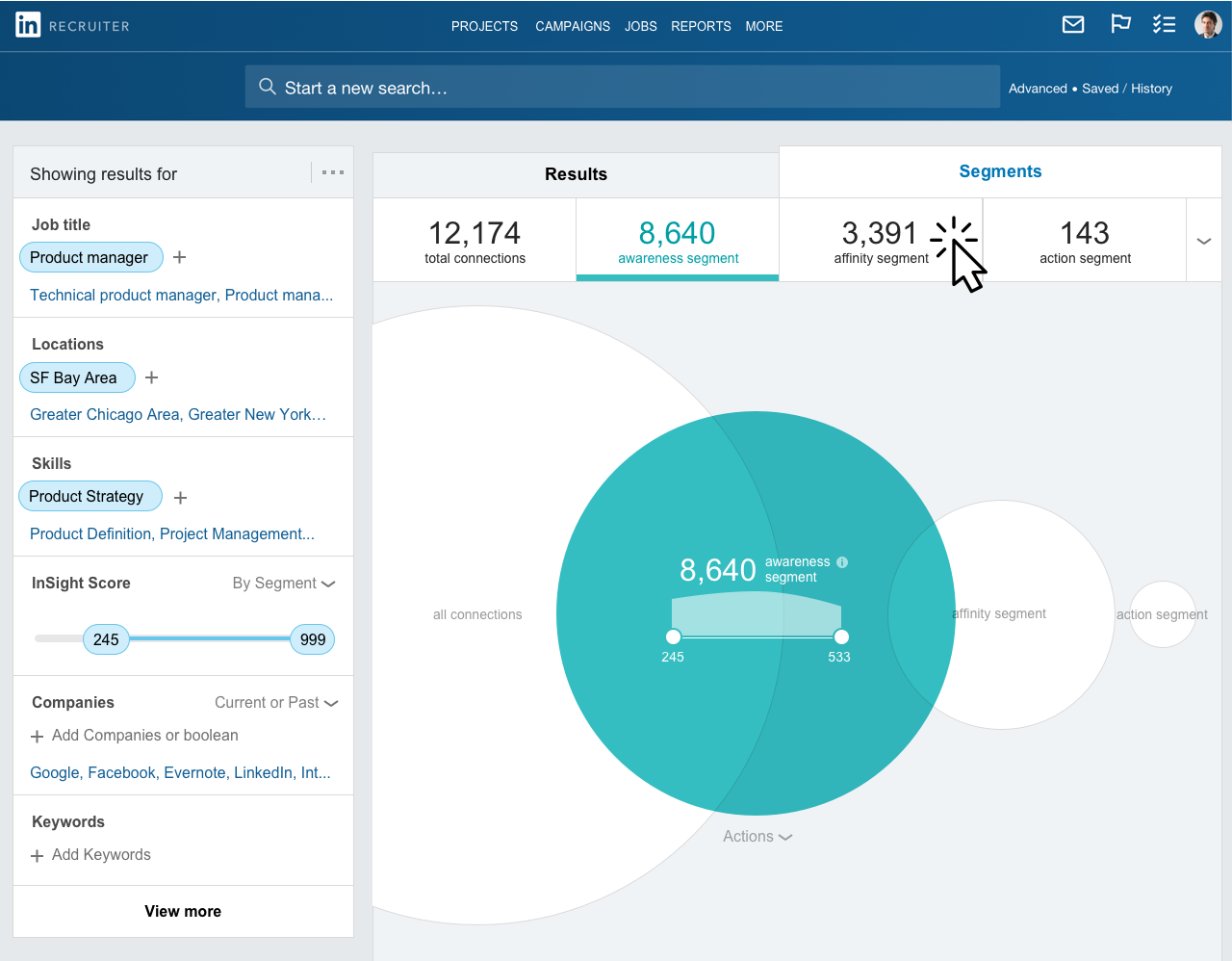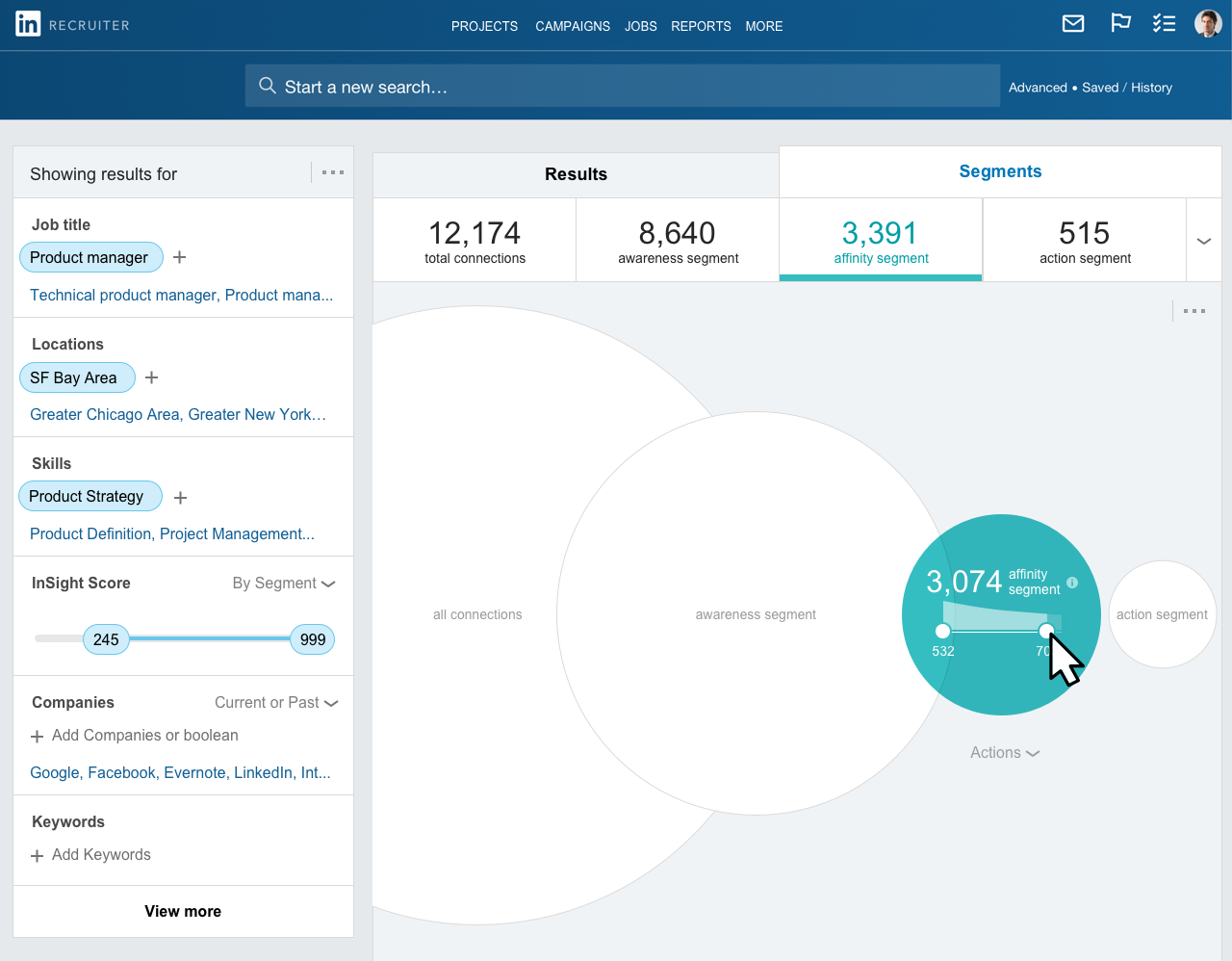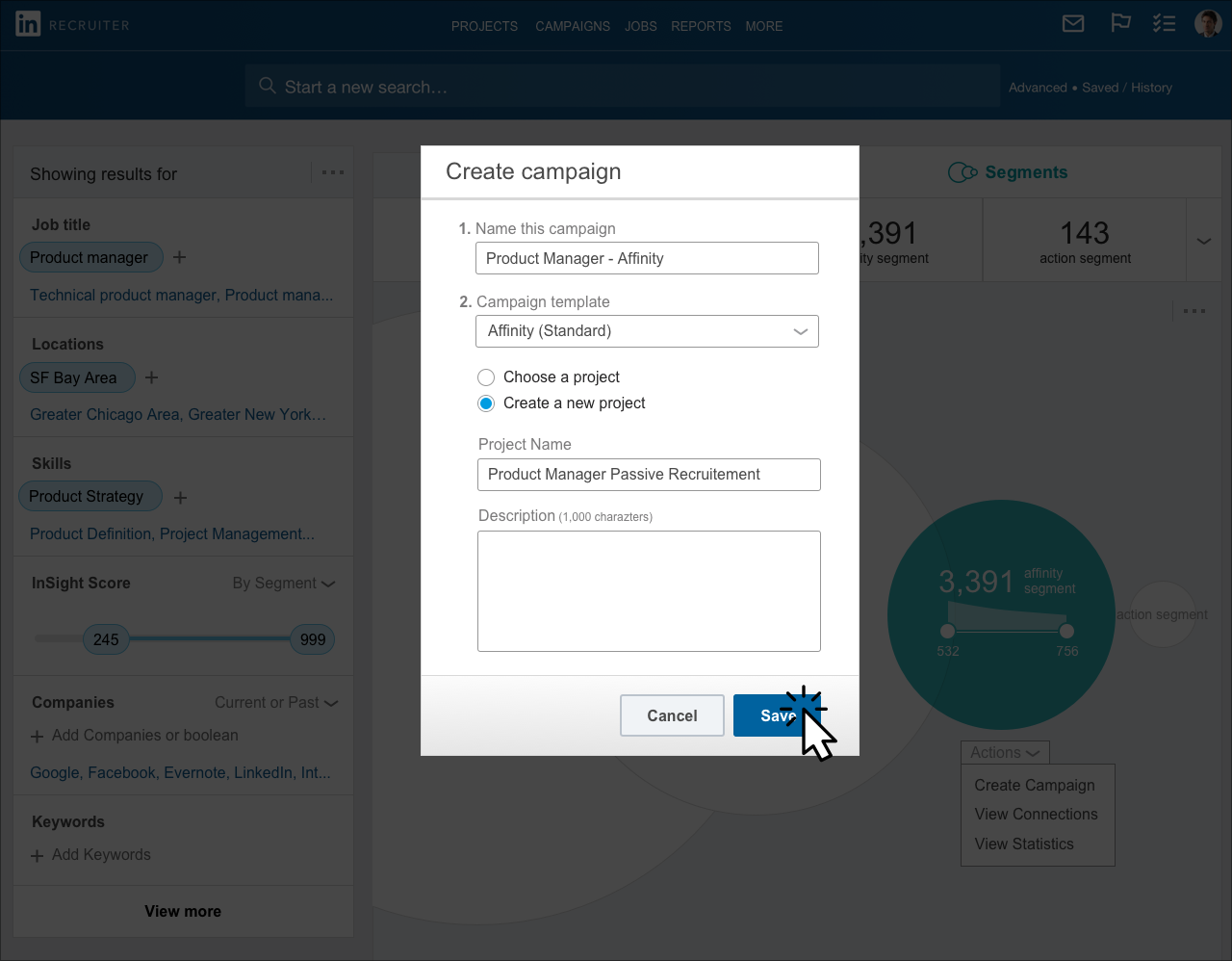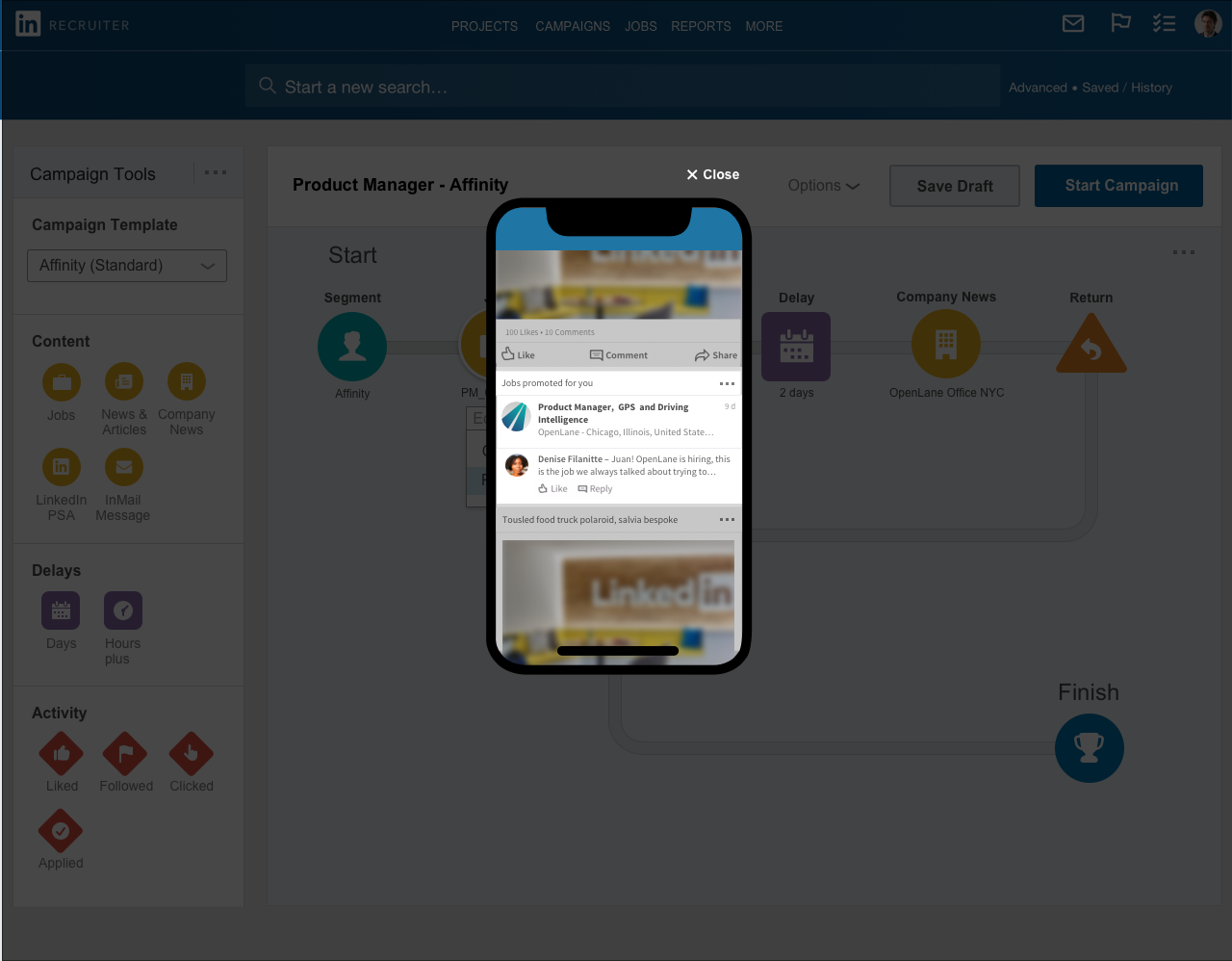Setting the Stage
LinkedIn is a network of over 560 million professionals. We use the power of professional networking and profile data to connect individuals with relevant opportunities. Hiring managers and recruiters are frequently interested in people who are already employed or satisfied with their current positions.
Goal
Design an experience that presents job opportunities to a passive candidate, who is not actively looking for a new position. Find creative solutions that gains the passive candidate's interest in a new position, and garners a response.
Outcome
I delivered a multi-product journey to describe a life-cycle of 2 passive candidates, showing how they moved down a recruiting engagement funnel. The other side of the journey shows how recruiters and hiring managers use insights and prescribed actions, garnered from a candidates attributes and behaviors on LinkedIn, to help influence a candidate's engagement and get them to engage with job posting.
Initial Research
To tackle this challenge, I needed to get up to speed on recruiting for passive candidates. This research included desk based research where I looked up articles and posts about recruiting passive candidates and the competitive landscape for hiring passive candidates. Additionally, I created a survey reaching out to friends and colleagues, asking them about their experiences working with recruiters.
Desk Based Research
From the desk based research, generally I learned that the percentage of passive candidates is anywhere from 85-90%. See graphic below for more specific takeaways.
Click here to view this document.
Foundational User Research
Given the time constraints of this project, this is not an exhaustive study, but I was able to gleam valuable insights. See graphic below for more specific takeaways.
All of the major findings from the two types of research.
Looking forward from the findings I am starting to see a possible way to move forward.




